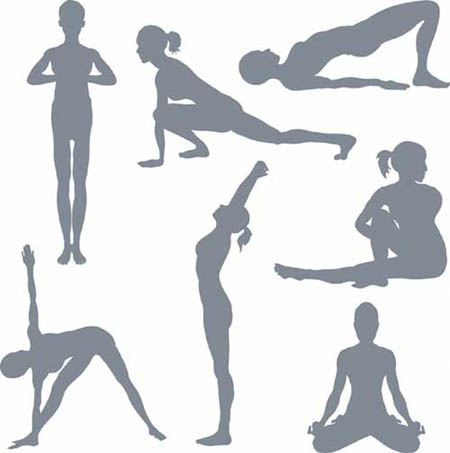 When it comes to the question of stretching, there are opinions all across the spectrum. Some experts contend that you should never stretch at all since it deforms the tissues, destabilizes the joints, and makes the body more prone to injury. Then, on the completely opposite side of the scale, is the other camp which swears that stretching is an absolute must prior to any activity (up to and possibly including sex) as it is a way to warm-up the muscles to prevent injury.
When it comes to the question of stretching, there are opinions all across the spectrum. Some experts contend that you should never stretch at all since it deforms the tissues, destabilizes the joints, and makes the body more prone to injury. Then, on the completely opposite side of the scale, is the other camp which swears that stretching is an absolute must prior to any activity (up to and possibly including sex) as it is a way to warm-up the muscles to prevent injury.
So, who is right?
Well, for me, the question really isn’t whether to stretch or not to stretch, but rather when to stretch and how to stretch.
When to Stretch
First let’s cover the question of when to stretch. This is easy. Never stretch before exercise. The anti-stretching pundits are right on here. Numerous studies have shown that stretching prior to exercise decreases strength output as well as making the body more susceptible to injury, not less! Do dynamic mobility drills instead. Before your workout, concentrate on dynamic movements that prep your muscles for the exercises to come. It increases blood flow, jacks up your nervous system and lubricates your joints. Good stuff!
Save the stretching for after your workout. Here is where it’s beneficial. Post workout stretching helps to remove residual muscle tension leftover from your exercise and reduce delayed onset muscle soreness (DOMS).
What’s the Best Type of Stretching?
When most people think of stretching, they think of static stretching. This involves holding a stretch for long periods of time to lengthen the tissues. This is actually the worst kind of stretching you can do.
Static stretching, or passive stretching, elongates the tissues by deforming them. Herein lies the problem. Anytime you voluntarily deform your muscles, tendons, and ligaments, you are reducing their natural elasticity. If you stretch a rubber band and let it go, it quickly snaps back to its original shape due to the elasticity inherent in the material. However, if you tack it down, stretch it to its limit and hold it there, it gradually loses that “natural” elasticity. You deform it. This is what you are doing to your muscles during a static stretch. This has the effect of weakening the entire structure and increasing the opportunity for injury.
Can you do this type of stretching and not injure yourself? Sure. But, I believe there are other ways that strengthen, as well as stretch muscles, that are more efficient and healthier. One of the best methods is yoga asana. They are a balance strength and surrender. For example, in a forward bend, you are not trying to “stretch” the hamstrings, but rather tense the quads to “release” the hamstrings – reciprocal inhibition. The muscles are already flexible enough, its tension that holds them in place. Relax the residual tension and suddenly you are more flexible.
Here’s an example of one of the compensatory movement routines I use with many of my fitness clients. This is performed after the main workout!
Remember though that flexibility is a measure of range of motion in one specific direction. This does nothing for us in real life, it’s just a measure. Mobility is movement into the extreme range of motion of each joint through voluntary muscle control.
Static stretching pushes the muscle beyond what it’s able to do because you’re forcing it to lengthen until it changes shape and stays longer. This compromises the elasticity our muscles have, and need, in order to protect themselves. In order to increase our range of motion, it’s better to focus on regulating the tension in our muscles through mobility, breathing, and reciprocal inhibition where flexion of one muscle causes the release of its twin. Not by deforming our tissues causing micro-trauma which may catch up to us later in life.
To learn more about dynamic mobility drills and post workout stretching, see Warrior Fitness: Conditioning for Martial Arts or the Martial Power Program





4 Comments
Petro
March 14, 2012Study after study after metastudy has found no utility in stretching for preventing DOMS. The only three things that seem to prevent DOMS are proper cool-downs, NSAIDs (well, and steroids), and deep tissue massage by someone who knows what they are doing.
http://www.coachingireland.com/files/cheung.pdf
Stretching is good, stretching is CRITICAL to being able to move well and to do a lot of the stuff we do in this art, and over time static and dynamic stretching and mobility drills do really good things, but the one thing stretching does not do is prevent DOMS.
Jon
March 15, 2012Hi Petro,
Thanks for the comment and the link to the study!
However, this study uses static stretching as a protocol which is exactly the type of stretching I recommend avoiding – no suprise that it offers little to no benefit. 🙂
[…] spoken about this many times in the past (see HERE), but it bears repeating. Static stretching prior to training not only has zero benefit but has […]
[…] 1) To Stretch or Not To Stretch […]
Leave A Response